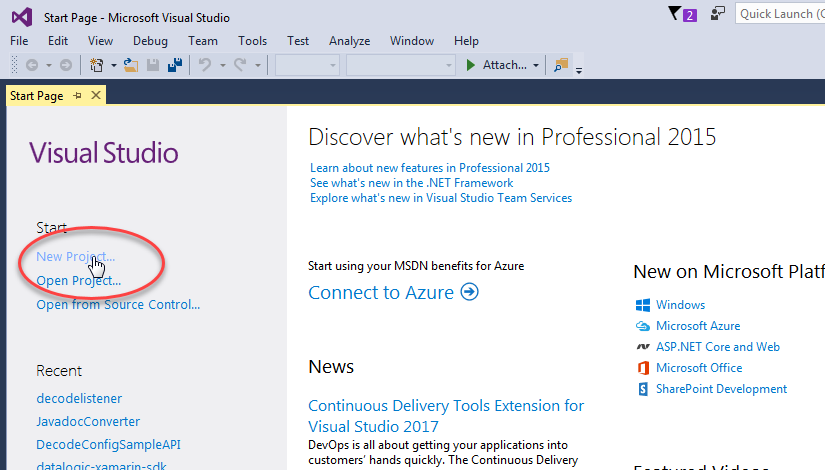

select a STATUS to go to DOSSIER OVERVIEW: DossiersStatusOverviewPageViewModel.OnDossierStatusSelected(.) It simply crashes every time you navigate back to the previous page in IOS. If you don't go back to the overview, but instead you select a dossier from the list and thus navigate to a next view and THEN you try to navigate back => the app crashes. It is not only here that you can make the app crash. At this point the app crashes imediately when you navigate back to the status overview (first page). When you tab one of those statuses, an overview is given of all dossiers having that status. This view displays the different STATUSES a dossier can have and mentions for each how many dossiers are currently in that status, much like you see the #messages you have in all of your different mailboxes inside the IOS Mail-app.
#Get xamarin for visual studio 2015 code
Talking code the app starts with the "DossiersStatusOverviewPage"-page("DossiersStatusOverviewPageViewModel"-viewmodel) on top. If the user has set the "Remember Me"-option to TRUE (which is set by default) and he has logged in before, the app immediately starts with an overview of data on top without prompting the user to login again. You see the app doesn't always make the user login. I was doubtfull that it would fix the crash. Your right about "Navigation.PopModalAsync()" so I implemented it, but the app keeps on crashing in IOS. Please try awaiting all calls to Navigation.PopModalAsync() and let me know if this resolves the issue. I believe this is what is happening, and that it is the root cause of this issue. This means that the Detail page can potentially be switched before the current page is Popped, causing the stack to be out of sync. Please note that Navigation.PopModalAsync() is awaitable, but you are not using the await keyword. This is Popping the view from the stack, then sending the navigate message, which is picked up by your MasterDetailPage, which switches the Detail page.

MessagingCenter.Send(this, "Navigate", new MasterPageItem )

In many of your ViewModels, you are using this type of code block: However, from looking through your navigation model, it looks like this is the issue. The code could look like this: using Īnd the rebuild solution, as I believe, might not be necessary to work Intellisense for can't run your project due to dependencies. I believe that the (if you use generated name App) is a good place.

Then insert this attribute to appropriate place. If you use shared project, then restore this nuget package to all projects referencing this shared project.
#Get xamarin for visual studio 2015 portable
If you use Xaml in portable library, restore(download and install) this nuget package to this library. Suitable for Xamarin.Forms is the second way(using attribute). This attribute you can found in Portable.Xaml nuget package. You can this definition create by assembly attribute XmlnsDefinitionAttribute.You can use xsd file and this file then register to xml schemas - after you open xaml file, the menu Xml/Schemas appear.This definition can be provided to Visual Studio by two ways: For the Xamarin.Forms Visual Studio needs xml definition for namespace. To take advantage of Intellisense the Visual Studio must get appropriate definition of xml namespace for Xamarin.Forms. But this solution is not correct, IntelliSense then not always correctly suggests. Solution below is if you edit Xamarin xaml as file with content type xml. In popup select "XAML Designer with Encoding" and click OK. To open xamarin XAML file as file with content type xaml simply in solution explorer right click the xaml file and select Open With. The reason why Intellisense is not appear in editor is that Xamarin XAML is not opened as file with content type xaml but file with content type xml.


 0 kommentar(er)
0 kommentar(er)
